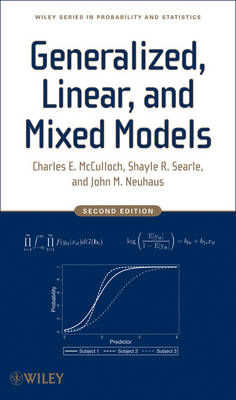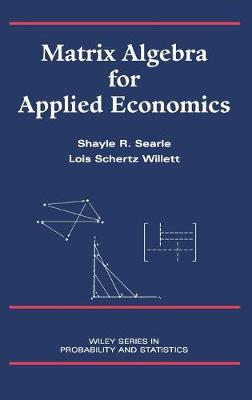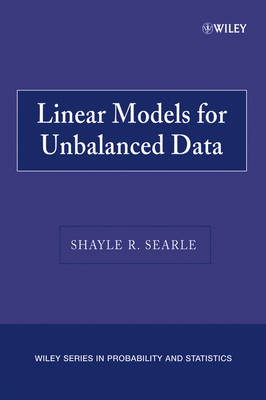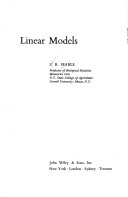Wiley Series in Probability and Statistics
2 primary works • 7 total works
Book 364
Generalized, Linear, and Mixed Models
by Charles E McCulloch, Shayle R. Searle, and John M. Neuhaus
Generalized, Linear, and Mixed Models, Second Edition provides an up-to-date treatment of the essential techniques for developing and applying a wide variety of statistical models. The book presents thorough and unified coverage of the theory behind generalized, linear, and mixed models and highlights their similarities and differences in various construction, application, and computational aspects.
A clear introduction to the basic ideas of fixed effects models, random effects models, and mixed models is maintained throughout, and each chapter illustrates how these models are applicable in a wide array of contexts. In addition, a discussion of general methods for the analysis of such models is presented with an emphasis on the method of maximum likelihood for the estimation of parameters. The authors also provide comprehensive coverage of the latest statistical models for correlated, non-normally distributed data. Thoroughly updated to reflect the latest developments in the field, the Second Edition features:
- A new chapter that covers omitted covariates, incorrect random effects distribution, correlation of covariates and random effects, and robust variance estimation
- A new chapter that treats shared random effects models, latent class models, and properties of models
- A revised chapter on longitudinal data, which now includes a discussion of generalized linear models, modern advances in longitudinal data analysis, and the use between and within covariate decompositions
- Expanded coverage of marginal versus conditional models
- Numerous new and updated examples
With its accessible style and wealth of illustrative exercises, Generalized, Linear, and Mixed Models, Second Edition is an ideal book for courses on generalized linear and mixed models at the upper-undergraduate and beginning-graduate levels. It also serves as a valuable reference for applied statisticians, industrial practitioners, and researchers.
Book 391
Variance Components
by Shayle R. Searle, George Casella, and Charles E McCulloch
Variance Components by Shayle R. Searle, George Casella, Charles E. McCulloch (978-0-470-00959-8)
Matrix Algebra for Useful Statistics by Shayle R. Searle (978-0-470-00961-1)
Linear Models for Unbalanced Data by Shayle R. Searle (978-0-470-04004-1)
Generalized, Linear, and Mixed Models, Second Edition by Charles E. McCulloch, Shayle R. Searle, John M. Neuhaus (978-0-470-07371-1)
Linear Models by Shayle R. Searle (978-0-471-18499-7)
Matrix Algebra for Applied Economics
by Shayle R. Searle and Lois Schertz Willett
Highlights include: Numerous examples of real-world applications Challenging exercises throughout the book Mathematics understandable to readers of all backgrounds Extensive up-to-date reference material Matrix Algebra for Applied Economics provides excellent guidance for advanced undergraduate students and also graduate students. Practicing economists who want to sharpen their skills will find this book both practical and easy-to-read, no matter what their applied interests.
It will also be useful to any practicing statistician who has to analyze unbalanced data, perhaps arising from surveys, and wishes to understand the output from model-fitting procedures and the discrepancies in analysis from one recognized package to another." a?"Biometrics This newly available and affordably priced paperback version of Linear Models for Unbalanced Data offers a presentation of the fundamentals of linear statistical models unique in its total devotion to unbalanced data and its emphasis on the up-to-date cell means model approach to linear models for unbalanced data. Topic coverage includes cell means models, 1-way classification, nested classifications, 2-way classification with some-cells-empty data, models with covariables, matrix algebra and quadratic forms, linear model theory, and much more.






